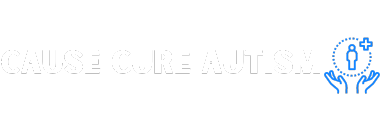Understanding and Managing Hair-Pulling Behavior in Children with Autism
Dealing with hair-pulling behavior in babies and toddlers with autism can be challenging. This behavior, which is common in people on the spectrum, can often be distressing for both the child and their caregivers. Research shows that self-injurious behavior, like hair-pulling, occurs more frequently in individuals with autism, especially females.
It’s essential for parents to educate themselves about the potential causes of hair-pulling and strategies to manage this behavior effectively.
Understanding hair-pulling in babies and toddlers
Hair-pulling is a common self-stimulating behavior in children with autism and Sensory Processing Disorder (SPD). It can also be associated with conditions like anxiety, ADHD, and OCD. However, it’s crucial to note that hair-pulling alone is not a definitive sign of autism.
This behavior can lead to physical discomfort and emotional distress, as it often stems from the need for sensory stimulation or self-soothing. Babies and toddlers might engage in hair-pulling when they are experiencing anxiety, boredom, or when they struggle to express their emotions effectively.
What causes hair-pulling in autism?
Identifying the triggers behind hair-pulling behavior is key to addressing and managing it effectively. Some common reasons for challenging behaviors include attention-seeking, escape or avoidance, sensory needs, or wanting something.
For children with autism, stress, anxiety, boredom, and sensory sensitivities are common triggers for hair-pulling. Understanding your child’s specific triggers can help you develop personalized strategies to support them.
How to help your toddler with hair-pulling
There are several practical ways to support your toddler in managing hair-pulling behavior. Creating a safe and nurturing environment at home is essential for your child’s well-being and development.
- Redirect your child to alternative sensory activities.
- Establish visual schedules to reduce stress and provide structure.
- Reinforce positive behavior and provide encouragement.
- Remain calm and gently redirect when hair-pulling occurs.
- Encourage healthy coping strategies like meditation or deep breathing.
By identifying and addressing your child’s triggers, you can help them manage their hair-pulling behavior effectively. Seeking professional guidance and support is crucial in developing a tailored plan to address this behavior.
Hair-pulling behavior can be managed
While hair-pulling behavior can be challenging, it is possible to manage it through observation, trigger identification, stress reduction, and redirection to more appropriate activities. Consulting healthcare professionals and seeking personalized guidance can make a significant difference in supporting your child.

Don’t miss out on the Autism Parenting Summit. Click here to sign up now!
FAQs
Q: Is hair-pulling in babies a symptom of autism?
A: While hair-pulling is common in children on the spectrum, it does not necessarily indicate autism in babies. Many typically developing infants engage in hair-pulling behavior, which often resolves with age.
Q: Is hair-twirling connected to autism?
A: Hair-twirling is a self-stimulating behavior that can occur in various populations, including those with anxiety or ADHD. It is not exclusive to autism, and seeking professional evaluation can provide clarity.
Q: Is hair-pulling sensory seeking?
A: Hair-pulling can serve as a sensory-seeking behavior, particularly in children with autism or SPD. Understanding your child’s sensory needs and triggers is essential in addressing this behavior.
Q: At what age is autism first noticed?
A: Signs of autism typically manifest by 12-18 months of age. Early detection and intervention play a vital role in supporting children with autism as they navigate their developmental journey.
References:
Grant, J. E., & Chamberlain, S. R. (2022). Autistic traits in trichotillomania. Brain and Behavior, 12, e2663. Link
Houghton, D. C., Tommerdahl, M., & Woods, D. W. (2019). Increased tactile sensitivity and deficient feed-forward inhibition in pathological hair pulling and skin picking. Behavior Research and Therapy, 120, 103433. Link
Johnson, C. P., & Myers, S. M.; American Academy of Pediatrics Council on Children with Disabilities. (2007). Identification and evaluation of children with autism spectrum disorders. Pediatrics, 120(5), 1183–1215.
Laverty, C., Oliver, C., Moss, J. et al. Persistence and predictors of self-injurious behavior in autism: a ten-year prospective cohort study. Molecular Autism 11, 8 (2020). Link
Mayo Clinic. (2016). Trichotillomania (hair-pulling disorder) – Symptoms and causes. Mayo Clinic. Link
Simonoff, E., Pickles, A., Charman, T., Chandler, S., Loucas, T., & Baird, G. (2008). Psychiatric disorders in children with autism spectrum disorders: Prevalence, comorbidity, and associated factors in a population-derived sample. Journal of the American Academy of Child and Adolescent Psychiatry, 47(8), 921–929. Link
Steenfeldt-Kristensen, C., Jones, C.A. & Richards, C. The Prevalence of Self-injurious Behaviour in Autism: A Meta-analytic Study. J Autism Dev Disord 50, 3857–3873 (2020). Link


